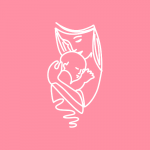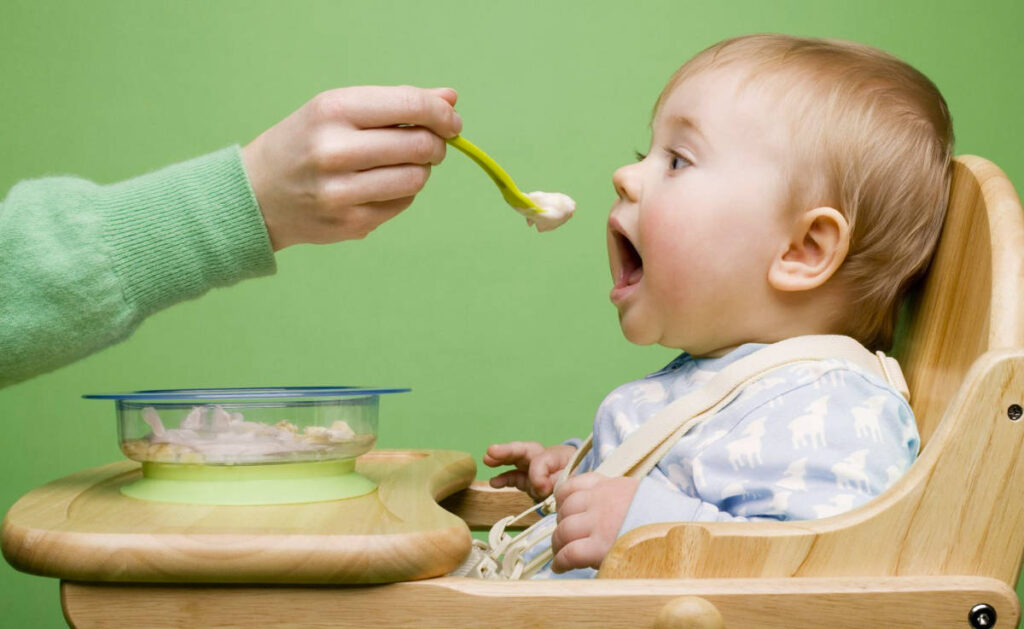When can babies eat baby food? As parents, one of the most exciting milestones is introducing solid foods to your baby! The transition from milk to solid foods can be confusing and scary. In this blog post, we’ll discuss when and how to introduce baby food to your little one, as well as the types of foods that are best suited for their developing digestive system.

We’ll also provide tips and tricks to make this transition a successful and enjoyable experience for both you and your baby. So, join us as we explore the world of baby food and help your little one explore the exciting new flavors and textures of solid foods!
Benefits of Introducing Solid Foods to your Baby
Introducing solid foods to your baby can provide many benefits, including:
– helping to establish a healthy eating pattern early on
– providing essential nutrients and calories
– helping to prevent obesity and other health problems in the future
There are a few things to keep in mind when introducing solid foods to your baby. First, make sure that your baby is hungry and has been drinking plenty of fluids. Second, choose healthy foods that your baby will enjoy. Finally, be sure to supervise your baby while he is eating, and be sure to offer him plenty of water to drink.
When can babies eat baby food?
It depends on your baby’s age, weight, and health. However, most experts generally recommend starting to give solid food to your baby between 6 and 12 months old. This is when their digestive system is mature enough to handle solid food, and their teeth have started to come in.
When to Start Introducing Solid Foods For your baby?
To introduce solid foods to your baby. Some parents start by offering a small number of solids around six months old, while others wait until their baby is a bit older, around eight months. It is important to keep in mind that babies are different and will develop at their own pace. What works for one baby may not work for another. Ultimately, it is up to you and your baby to decide when to start solid foods.
Signs Baby is Ready to Start Eating Solid Foods
It can be difficult to tell when your baby is ready to start eating solid foods. Some signs that your baby is ready to start eating solid foods include:
-Your baby is interested in food and is trying to reach for food that is placed near them
-Your baby is sitting up and has developed enough muscle strength to hold their head up while eating
-Your baby is starting to babble and make interesting sounds when they are eating
-Your baby is starting to suck on their hands and fingers when they are trying to eat
-Your baby is starting to develop a healthy appetite and is eating more than they were before
-Your baby is losing weight or not gaining weight as fast as they should be
Types of Baby Food
There are a variety of baby food types to choose from when it comes time to feed your little one. Some of the most popular include jarred baby food, homemade baby food, and formula. It’s important to choose a type of food that your baby will enjoy and that meets their nutritional needs.

Different Types of Baby Food
There are many different types of baby food, each with its own benefits. Some babies prefer pureed foods, while others prefer chunkier foods. Some babies are more inclined to eat soft foods, while others are more inclined to eat hard foods. Some babies are more inclined to eat bland foods, while others are more inclined to eat flavors. Some babies are more inclined to eat cold foods, while others are more inclined to eat warm foods. Some babies are more inclined to eat solids, while others are more inclined to eat liquids.
How to Prepare Baby Food?
There are many ways to prepare baby food. You can either use a baby food maker, or you can prepare baby food using a stovetop.
To make baby food using a baby food maker, first, wash the baby food maker and then fill it with the baby food you want to make. Next, place the baby food in the machine and press the buttons to start the machine. Once the machine is started, the baby food will start to cook and will be ready to eat when it is finished.
To make baby food using a stovetop, first, heat the oven to 350 degrees Fahrenheit. Next, place the baby food you want to make in a baking dish and then bake it in the oven for 10 to 15 minutes. The baby food will be ready to eat when it is finished.
How to Introduce Solid Foods to Baby?
It is important to introduce solid foods to your baby as soon as possible after they are born. Solid foods provide essential nutrients and help to develop your baby’s palate. Start by offering your baby small amounts of breast milk or formula diluted with water, then gradually increase the number of solid foods. Be sure to introduce new foods one at a time, and wait at least two hours after introducing a new food before offering your baby the previous food again. Try to have a variety of foods available and offer them at various times of the day.
Choosing the Right Baby Food
Choosing the right baby food can be a daunting task. There are so many different types and brands to choose from, and it can be hard to know which one is best for your baby. Here are some tips to help you choose the right baby food:
- First, consider your baby’s age and nutritional needs. Baby food is designed to meet the specific needs of infants and toddlers. Some baby foods are specifically designed to provide nutrients like iron and zinc, while others are packed with vitamins and minerals to help build a strong immune system.
- Second, think about your baby’s preferences. Some babies love sweet baby food, while others prefer more savory options. Try to feed your baby foods that he or she enjoys and that meet his or her nutritional needs.
- Finally, consider your baby’s food allergies. If your baby has a food allergy, it’s important to consider which baby food brands are safe for him or her. Some baby food brands are specifically designed to be free of certain allergens, so be sure to ask about this before making a purchase.
Nutrition for Baby From solid food
Solid food for babies should be offered as soon as the baby can begin to chew and swallow. The American Academy of Pediatrics (AAP) recommends starting with pureed food and gradually introducing more complex textures and flavors. Babies should eat at least four to six small meals a day.
How to Make Sure Baby is Receiving the Right Nutrition
When it comes to feeding your baby, it’s important to make sure they’re getting the right nutrition. The American Academy of Pediatrics recommends that babies receive breast milk or formula exclusively for the first six months of life and then continue to breastfeed or formula feed for at least two years. If your baby is not breastfeeding or formula feeding, make sure they’re getting enough vitamins, minerals, and protein. You can also give them supplements such as iron, zinc, and vitamin D. And finally, be sure to keep track of your baby’s weight and growth.
Conclusion
As you can see, introducing solid foods to your baby is a big milestone in their development. It’s important to remember that every baby is different and may be ready for solids at different times. It’s best to start slow, with small amounts of food, and watch for signs of choking or allergies. It’s also important to talk to your pediatrician about any concerns you may have about when to start solid foods for your baby.
As long as you do your research and follow your doctor’s advice, you’ll have no trouble introducing solid foods to your baby. I hope you find this blog helpful, and if you do, please share this with your loved ones and friends. You are also welcome to visit our blog section for more tips and recommendations.
Reading Suggestions:


